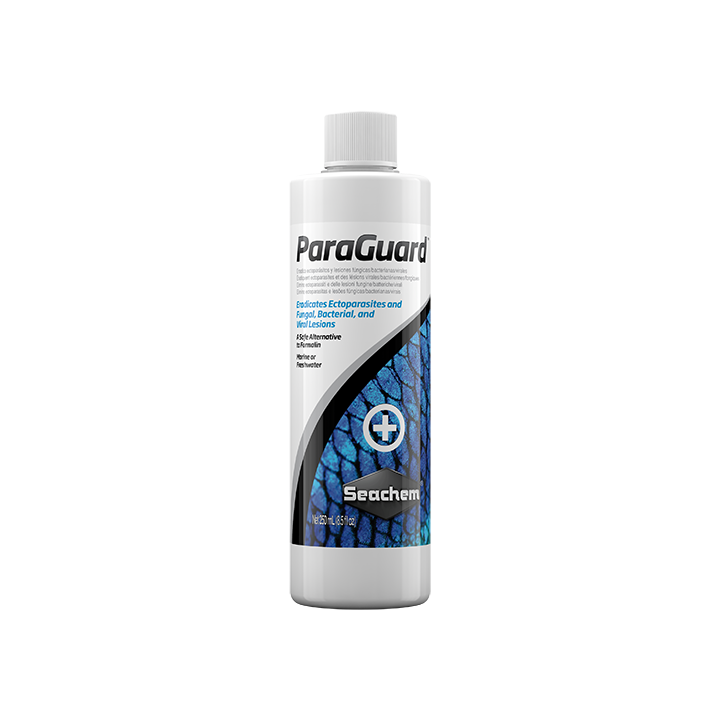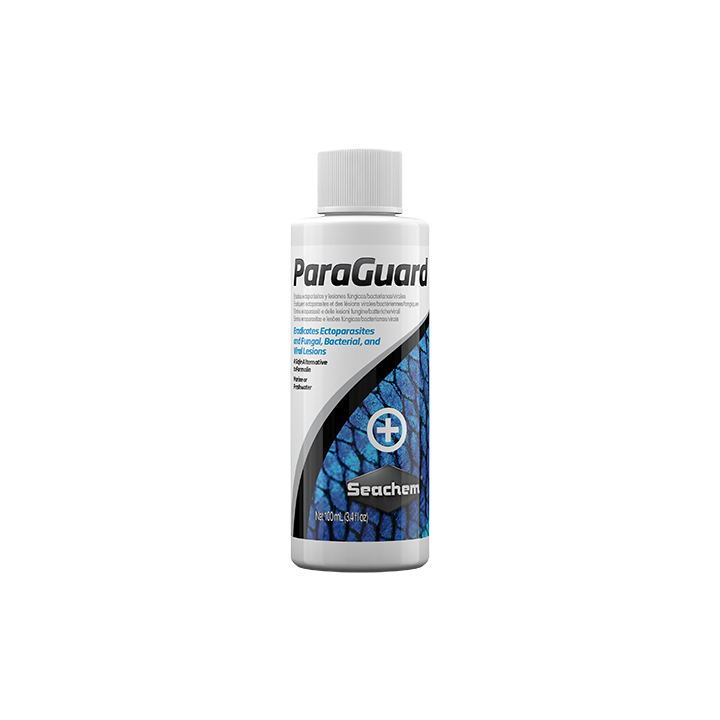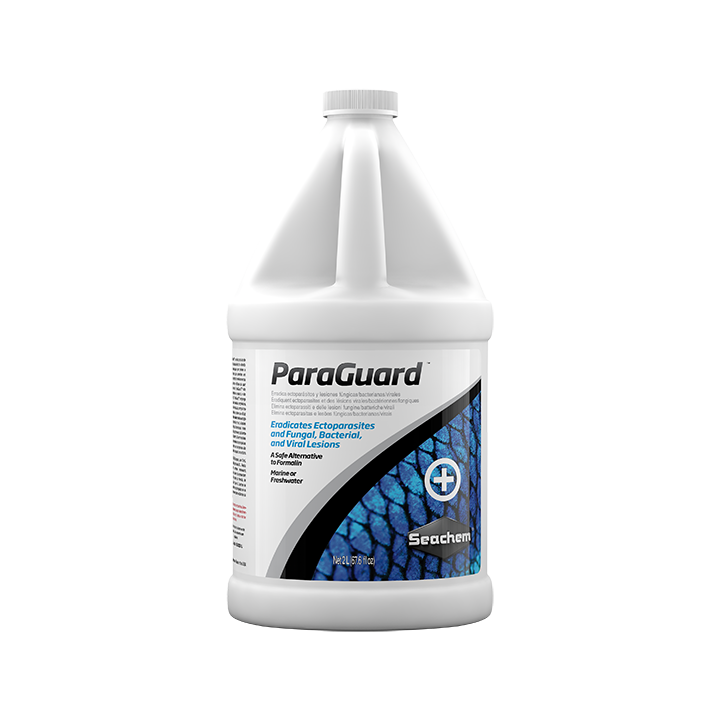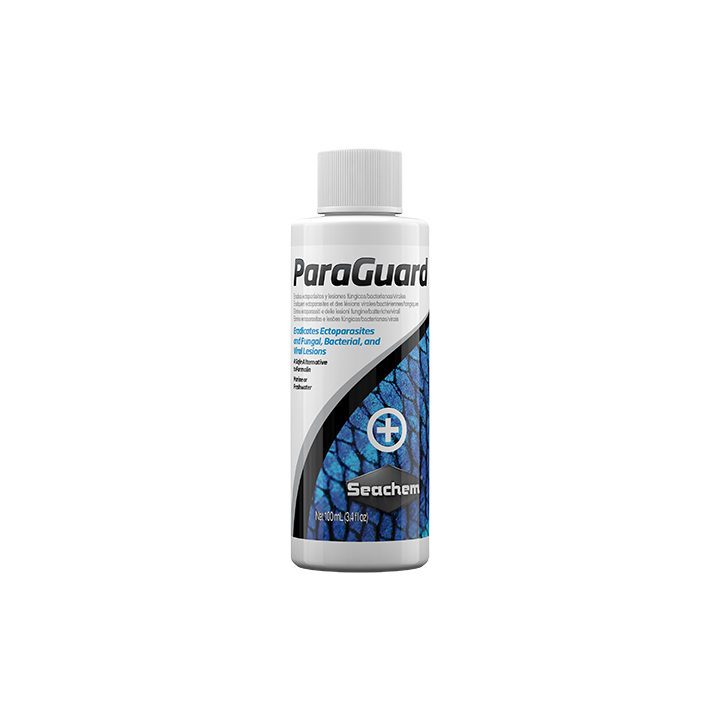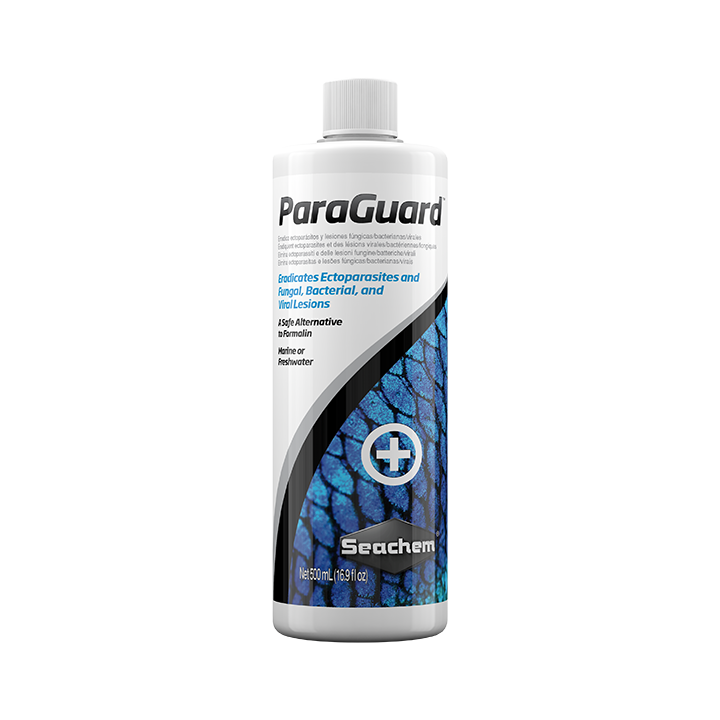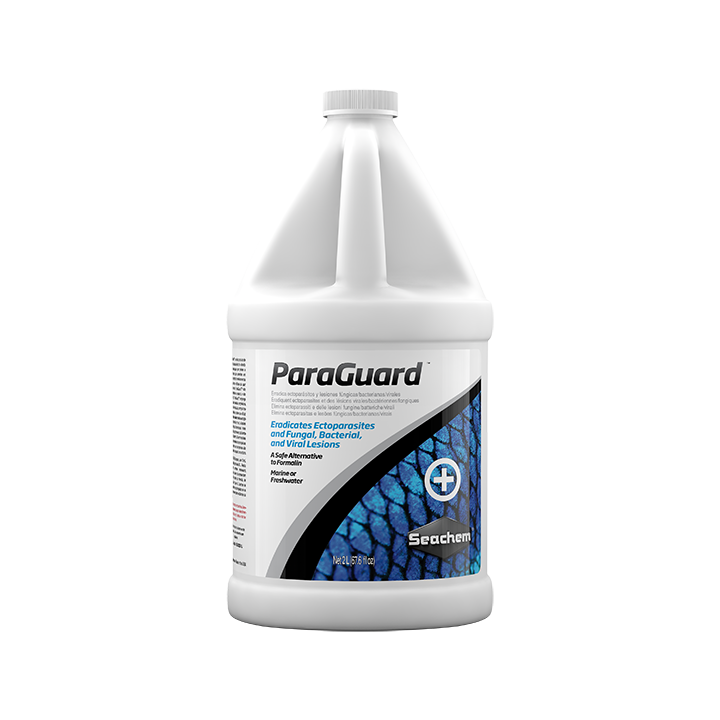Seachem
ParaGuard
ParaGuard
Couldn't load pickup availability
ParaGuard™ is the only fish and filter safe aldehyde based (10% by weight) parasite control product available (for parasites on fish). Unlike highly toxic and difficult to use formalin based medications, ParaGuard™ contains no formaldehyde or methanol and will not alter pH. ParaGuard™ employs a proprietary, synergistic blend of aldehydes, malachite green, and fish protective polymers that effectively and efficiently eradicates many ectoparasites (e.g. ich, etc.) and external fungal/bacterial/viral lesions (e.g., fin rot). It is particularly useful in hospital and receiving tanks for new fish and whenever new fish are introduced to a community tank.
- Eradicates ectoparasites and fungal, bacterial, and viral lesions
- Safer to dose than formaldehyde, formalin, and methanol
- Will not adversely effect bio-filter
Indications:
ParaGuard™ is appropriate for treating a variety of parasitic infections of exotic fish. Below are some of the more common infections treatable with ParaGuard™. Be aware that many diseases and infections share similar physical and behavioral symptoms, e.g. clamped fins, lesions, loss of appetite.
Piscinoodinium (freshwater) / Amyloodinium (saltwater)
Similar to Ich, but smaller and grey-gold. Most often seen in saltwater, but can occur in freshwater as well. Velvet is less common than Ich, but the treatment is almost identical. We see it more often in saltwater than freshwater.
Suggested Treatment Period:
14-21 days
Special Considerations
Velvet is a photosynthetic parasite - it will help with treatment if you can turn off the lights while the fish are infected.
Bacterial infection
Fins appear shredded, frayed, or decaying. Fin Rot is frequently mistaken for damage from fin-nipping fish. Contrary to the name, this is actually caused by bacteria, not fungus.
Suggested Treatment Period:
7 days or until infection clears
Special Considerations
Fin Rot is often found as a secondary infection (that’s an infection that started because the fish was already sick). Make sure to check for additional infections.
Dactylogyrus trematodes (skin) / Monogenenean trematodes (gills)
Fish appear sluggish, flash against rocks, and often gasp and show other signs of stress. Flukes are difficult to diagnose because the parasite itself cannot be seen until the advanced stages of infection. Look for gasping, irritated or red gills, excessive mucus production, twitching and flashing, and translucent spots (advanced infections)
Suggested Treatment Period:
14 days or until infection clears
Special Considerations
Dip treatments with ParaGuard™ are helpful in treating and preventing flukes, but keep in mind that this parasite spends part of its life cycle living in your water and substrate - the entire tank needs to be treated in order to clear the infection.
Share
